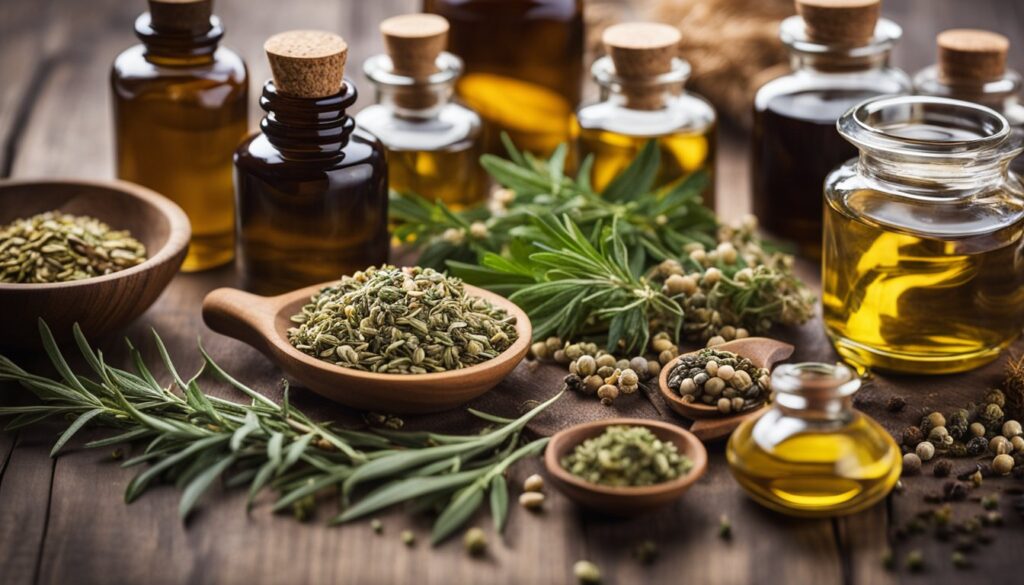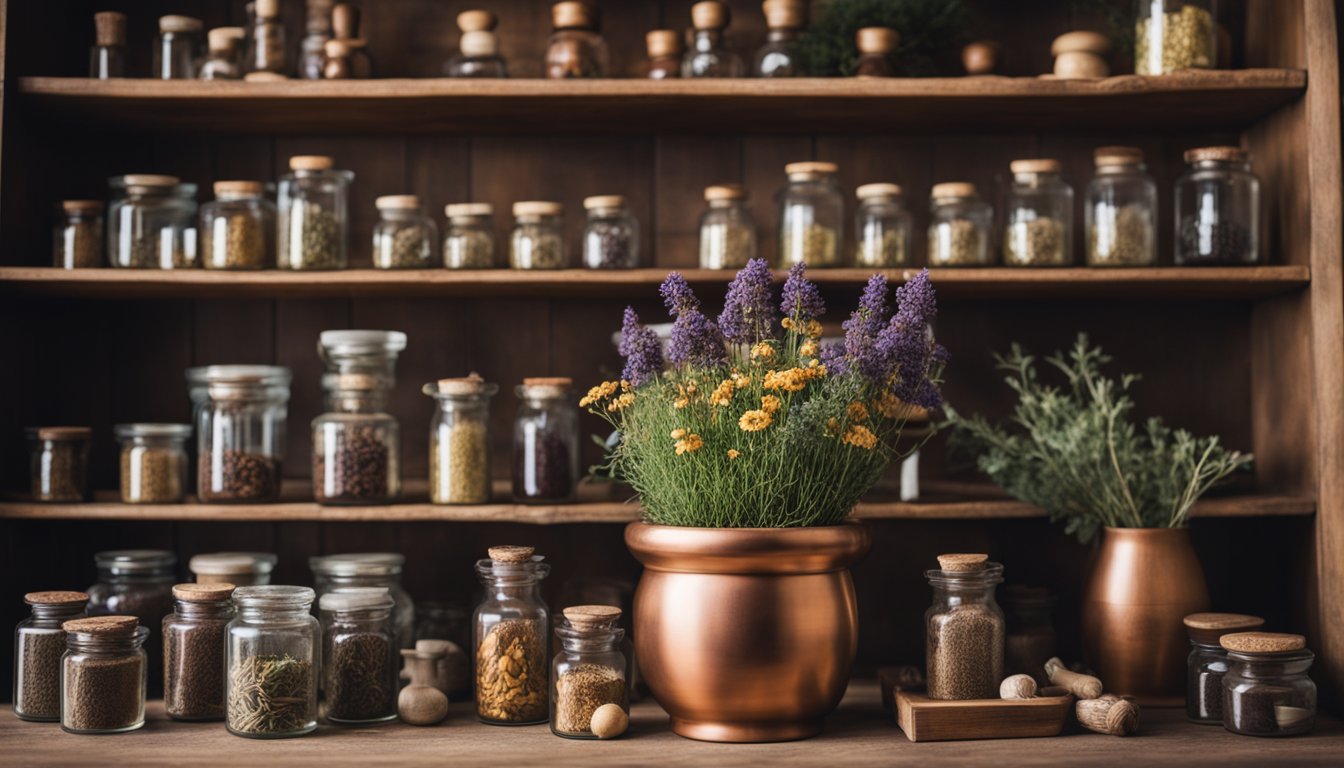Apothecary herbs have been cherished for centuries, offering a treasure trove of healing properties that modern medicine sometimes overlooks. From soothing teas to powerful tinctures, these herbs can transform your health and wellness routine in ways you might not expect. Imagine stepping into a world where nature’s most potent remedies are at your fingertips.
I’ve always been fascinated by the magic of these botanical wonders. Whether you’re seeking natural solutions for everyday ailments or looking to enhance your overall well-being, understanding apothecary herbs can open doors to holistic healing. Join me as we explore the benefits, uses, and rich history behind these incredible plants, and discover how they can enrich your life today.
Overview of Apothecary Herbs
Apothecary herbs are fascinating little plants that hold a treasure trove of natural remedies. These botanical gems have been around for centuries, offering healing properties that many overlook today. Various cultures have relied on these herbs for health benefits, creating a legacy rich in tradition.
To illustrate their uses, consider chamomile. This flowering herb isn’t just a pretty face; it works wonders for calming nerves and promoting sleep. Picture sipping a warm chamomile tea after a long day. Now, imagine feeling those worries melt away, pure bliss.
Another example is peppermint. Not only does it elevate your tea game, but it also helps with digestion. Enjoy a cup after a hefty meal, and you might just feel lighter. Who knew something so simple could be so effective?
Remember echinacea? It’s not just a trendy supplement but a powerhouse for immune support. People often turn to it during cold and flu season, hoping to keep those sniffles at bay. It’s like having a secret weapon in your herbal arsenal.
As I delve into apothecary herbs, I find myself captivated by the way they connect us to our ancestors. These plants have a rich history and were essential in early medicine. Can you imagine an apothecary bustling with activity, where jars filled with colorful herbs lined the shelves? It’s almost like stepping into a magical world.
Each herb carries its significance, whether in teas, tinctures, or salves. The ability of these plants to enhance wellness while often remaining unexplored is something I find particularly fascinating. It’s not just about health; it’s about rediscovering a part of our heritage.
In essence, apothecary herbs are not just for niche enthusiasts. They present a variety of options for anyone looking to improve their well-being in a natural way. So, whether you’re a seasoned herbalist or a curious newcomer, exploring these wonders can enrich your understanding of health. What’s stopping you from diving into a world filled with nature’s gifts?
Common Apothecary Herbs

Apothecary herbs play a significant role in health and wellness. Let’s dive into some notable examples that showcase their benefits and traditional uses.
Benefits of Each Herb
Chamomile is a favorite of many for its calming effects. It’s like a warm hug in a cup, perfect for winding down after a hectic day. Peppermint, on the other hand, works wonders for digestion. A simple tea can ease that post-meal discomfort. Echinacea shines when cold and flu season hits, helping to boost the immune system. It’s like your friendly neighborhood superhero, fighting off those pesky germs.
Another gem is lavender. Its aroma is soothing and promotes relaxation. This herb won’t just make your house smell amazing; it can also calm your mind. I find that a little lavender oil on my pillow makes for great sleep. Ginger, with its spicy kick, aids digestion and helps with nausea. This fiery root is a must-have for anyone traveling or trying new foods.
Uses in Traditional Medicine
In ancient times, chamomile was used as a remedy for various ailments, from sleeplessness to anxiety. It’s fascinating how something so simple became a staple in herbal medicine cabinets. Peppermint was often used not only for gastrointestinal issues but also as a remedy for headaches. Imagine biting into a fresh peppermint leaf, refreshing and invigorating.
Echinacea, hailing from North America, was used by Native Americans to treat infections. This knowledge has sparked a resurgence in its popularity, particularly in the form of extracts. Lavender had its own journey, frequently used in traditional baths and perfumes. A sprinkle of dried lavender blossoms can add a calming flair to any herbal mixture.
Lastly, ginger’s role in traditional medicine dates back thousands of years. This root has been cherished for its ability to alleviate digestive issues and soothe sore throats. Just think: a warm ginger tea can remedy so much while simultaneously warming your hands.
These herbs offer a treasure trove of health benefits, making them indispensable in the realm of natural remedies. Each herb, with its rich history and unique properties, can enhance overall well-being.
Growing and Harvesting Apothecary Herbs
Growing and harvesting apothecary herbs requires attention and care, leading to an abundant supply of natural remedies.
Best Practices for Cultivation
Start with quality seeds or seedlings. Selecting reputable sources ensures your plants thrive from the beginning. Create a well-draining soil mix to encourage strong root development. Embrace organic methods; they keep your herbs free from harmful chemicals. Maintain consistent watering, avoiding dry spells that can stunt growth.
Light also plays a crucial role. Place herbs in sunny spots, giving them at least six hours of sunlight daily. Otherwise, you might end up with sad, spindly plants that won’t do much good. Pruning your herbs regularly encourages bushier growth, it’s like giving them a little haircut to keep them stylish.
Consider companion planting. Certain herbs thrive alongside specific plants, creating a harmonious garden ecosystem. For instance, basil loves being near tomatoes; those two just vibe together. After planting, use mulch to retain moisture and suppress weeds, so your attention stays on those lovely herbs.
Seasonal Considerations
Spring marks the ideal planting season for most apothecary herbs. I often find the thrill of digging in fresh earth irresistible as temperatures rise. In regions with harsh winters, prepare for harvest before the first frost, which can damage sensitive plants.
During summer, herbs like chamomile and lavender flourish. They add beauty and fragrance to any garden. Don’t forget to check on moisture levels; hot days can dry out soil quickly. Harvesting in the early morning ensures maximum potency, as essential oils are highest in the cool air.
Autumn offers a second chance for some herbs. Many can be propagated before winter arrives. If you live where temperatures drop, consider using row covers or transferring pots indoors to protect them. There’s nothing like keeping your herbal friends cozy during frigid months, right?
Once you get the hang of it, growing and harvesting apothecary herbs becomes a rewarding hobby that pays off in both well-being and stunning garden displays.
Preparing Apothecary Herbs for Use

To truly harness the power of apothecary herbs, knowing how to prepare them correctly is essential. Proper preparation enhances their effectiveness, allowing these botanical gems to work their magic.
Drying and Storing Techniques
First, drying herbs allows the preservation of their flavors and potent properties. I tend to harvest them on a dry morning when their oils are at their peak. I can either tie them in small bunches and hang them upside down in a well-ventilated area or use a food dehydrator if it’s rainy out. Make sure each herb is completely dry before storage; moisture can lead to mold, and let’s be honest, no one wants herbal mold in their tea.
Once they’re dry, the next step is storage. I enjoy using glass jars since they’re airtight and help keep herbs fresh. Label each jar with the herb name and date, because who doesn’t love a little organization? Don’t forget to keep them in a cool, dark place. Sunshine doesn’t quite get along with delicate herbs. Over time, they lose potency, and after six months, it’s time to refresh my stock.
Methods of Extraction
Extracting the therapeutic properties from herbs doesn’t have to be daunting. One of my favorite methods is creating a simple herbal tea. Just steep a teaspoon of dried herbs in hot water for several minutes. Voilà! You’ve just released those herbal wonders into your cup.
For a more concentrated option, I often turn to tinctures. Combining dried herbs with alcohol, think vodka, creates a powerful extraction method. A 1:5 ratio of herbs to alcohol usually does the trick for woody herbs. Let the mixture sit for a few weeks, shaking it daily, and strain out the plant matter afterward. The result is a potent tincture that can last for years.
Some people prefer oils for their versatility. To make an infused oil, I simply submerge herbs in a carrier oil like olive or jojoba. If I’ve got a slow cooker, I love using that method on low heat for several hours. Once cooled, strain out the herbs, and I’m left with an aromatic oil ready for use in massage or skincare.
In each of these methods, there’s a unique charm in discovering how apothecary herbs transform from garden plants into powerful health allies. With just a little patience and creativity, I can enjoy the full benefits of apothecary herbs.
Before You Go – Apothecary Herbs
Exploring apothecary herbs has been an enriching journey for me. These natural remedies not only connect us to our ancestors but also offer practical solutions for enhancing our health and wellness. I encourage you to dive into the world of these botanical treasures and discover how they can transform your daily life.
Whether you’re growing your own herbs or using them in various preparations, the benefits are profound. By embracing this ancient wisdom, you can cultivate a deeper appreciation for nature’s gifts. So why not take the plunge and start your own herbal adventure? You might just find that apothecary herbs become an essential part of your wellness routine. Don’t forget to add The Herb Prof home page to your favorites so you don’t miss any new future articles.
References – Apothecary Herbs
Little Herb Encyclopedia, by Jack Ritchason; N.D., Woodland Publishing Incorporated, 1995
The Ultimate Healing System, Course Manual, Copyright 1985, Don Lepore
Planetary Herbology, Michael Tierra, C.A., N.D., Lotus Press, 1988
Handbook of Medicinal Herbs, by James A. Duke, Pub. CRP Second Edition 2007
The Complete Medicinal Herbal, by Penelope Ody, Published by Dorling Kindersley
Check the Following Articles!
Medicinal Herb Gardening: All You Need To Know
The Best Types of Rosemary for Your Cooking and Garden
Top 10 Leftover Oatmeal: Delicious Recipes & Tips
Creating the Perfect No Dig Garden Bed for Healthy Plants
Frequently Asked Questions – Apothecary Herbs
What are apothecary herbs?
Apothecary herbs are plants traditionally used for their healing properties and natural remedies. Often overlooked by modern medicine, these herbs can enhance health and wellness through various preparations, such as teas and tinctures.
What are some common apothecary herbs?
Common apothecary herbs include chamomile for relaxation, peppermint for digestion, echinacea for immunity, lavender for soothing effects, and ginger for digestive relief and nausea alleviation.
How have apothecary herbs been historically used?
Historically, apothecary herbs have been used by various cultures for medicinal purposes. For example, Native Americans utilized echinacea for infections, while chamomile has long been regarded as a remedy for insomnia and anxiety.
How can I grow apothecary herbs?
To grow apothecary herbs, start with quality seeds and well-draining soil. Ensure consistent watering and sunlight, and consider pruning and companion planting to promote a thriving garden ecosystem, especially during the spring planting season.
What are the best methods for preparing apothecary herbs?
The best methods for preparing apothecary herbs include drying them by hanging them upside down or using a dehydrator, and then storing them in airtight glass jars. You can also make herbal teas, tinctures, or infused oils for various uses.
Why should I consider using apothecary herbs?
Using apothecary herbs offers a natural approach to enhance your well-being. They provide a range of health benefits, are deeply rooted in historical practices, and can be fulfilling to grow and prepare in your own garden.

